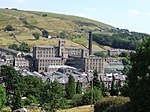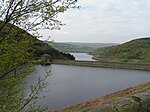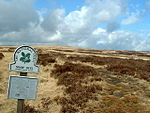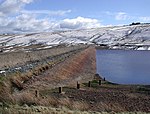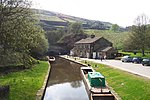Marsden, West Yorkshire
Colne ValleyFormer civil parishes in West YorkshireGeography of KirkleesMarsden, West YorkshireTowns and villages of the Peak District ... and 2 more
Use British English from December 2018Villages in West Yorkshire

Marsden is a large village in the Colne Valley, in the metropolitan borough of Kirklees, West Yorkshire, England. It is in the South Pennines close to the Peak District which lies to the south. The village is 7 miles (11 km) west of Huddersfield at the confluence of the River Colne and Wessenden Brook. It was an important centre for the production of woollen cloth. In 2020, the village had an estimated population of 3,768.
Excerpt from the Wikipedia article Marsden, West Yorkshire (License: CC BY-SA 3.0, Authors, Images).Marsden, West Yorkshire
Brougham Road, Kirklees
Geographical coordinates (GPS) Address Nearby Places Show on map
Geographical coordinates (GPS)
| Latitude | Longitude |
|---|---|
| N 53.6011 ° | E -1.9267 ° |
Address
Brougham Road
Brougham Road
HD7 6BJ Kirklees
England, United Kingdom
Open on Google Maps

